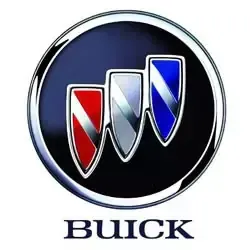Buick Regal Sportback Tire Pressure
Most common recommended tire pressure for Buick Regal Sportback can range from 33 psi to 35 psi depending on year of production, trim and OEM tire size, but it maybe different for older models. It is imperative to confirm the exact tire inflation for your Buick Regal Sportback to ensure safety on the road. Always refer to your vehicle owner's manual for the correct tire pressure designated by vehicle's manufacturer.
Select your Buick Regal Sportback production year to see its recommended tire inflation.
| Model Year | Front Tires | Rear Tires |
|---|---|---|
| 2020 Buick Regal Sportback | 33 - 35 psi | 33 - 35 psi |
| 2019 Buick Regal Sportback | 33 - 35 psi | 33 - 35 psi |
| 2018 Buick Regal Sportback | 33 - 35 psi | 33 - 35 psi |
Recommended Tire Pressure for Buick Regal Sportback
Maintaining the recommended tire pressure for a Buick Regal Sportback is crucial for several reasons, directly impacting safety, performance, fuel efficiency, and the longevity of the tires. Adequate tire pressure ensures optimal contact between the tire and the road, enhancing handling and stability, especially at higher speeds or in corners, thus contributing significantly to the vehicle's safety. Underinflated tires can lead to uneven wear, increased rolling resistance, and overheating, which may cause premature failure or blowouts, posing a risk to occupants. Conversely, overinflation results in less tire surface touching the road, reducing traction, increasing braking distances, and making the ride uncomfortably harsh. Properly inflated tires maintain their integrity and wear evenly, extending their lifespan and reducing the frequency of replacement. Furthermore, tires at the recommended pressure offer the least resistance, improving fuel economy by ensuring the engine does not work harder than necessary to keep the car moving. For the Buick Regal Sportback, adhering to the manufacturer's suggested tire pressure, usually found on a sticker in the door jamb or in the owner's manual, is a small yet significant step toward guaranteeing the vehicle's optimal performance, ensuring a safer driving experience, and achieving cost savings on fuel and tires over time.

All listed guides, data and/or calculations are for informational purposes only. TirePressure.com does not warrant or make any representations regarding the accuracy of or the results of the use of this information. Always refer to vehicle owner's manual for the correct tire pressure configuration.